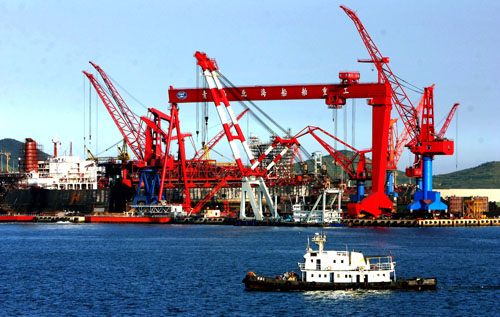含钼镍基焊缝金属在硝酸溶液中的腐蚀行为
张旭, 陆善平
1. 中国科学院金属研究所 沈阳材料科学国家研究中心 沈阳 110016
2. 中国科学院 核用材料与安全评价重点实验室 沈阳 110016
3. 中国科学技术大学材料科学与工程学院 沈阳 110016
Corrosion Behavior of Ni-based Weld Metals with Different Mo Content in a Nitric Acid Aqueous Solution
ZHANG Xu, LU Shanping
1. Shenyang National Laboratory for Materials Science, Institute of Metal Research, Chinese Academy of Sciences, Shenyang 110016, China
2. CAS Key Laboratory of Nuclear Materials and Safety Assessment, Institute of Metal Research, Chinese Academy of Sciences, Shenyang 110016, China
3. School of Materials Science and Engineering, University of Science and Technology of China, Shenyang 110016, China
摘要
研究了三种不同Mo含量的镍基焊缝熔敷金属在强氧化性介质(65%硝酸溶液)中的腐蚀行为。结果表明,熔敷金属在硝酸溶液中浸泡后发生了晶间腐蚀、点蚀以及枝晶间腐蚀等局部腐蚀。由于Mo元素促进了大尺寸Laves相在熔敷金属枝晶间的析出,在Laves相与基体之间产生了较大的电化学差异,导致Laves相在氧化性介质中腐蚀溶解,增大了熔敷金属的点蚀敏感性。在620℃焊后的去应力退火过程中,在焊缝中发生元素再分配,Mo元素降低了枝晶间Ni、Cr元素的贫化。由于枝晶间Ni、Cr元素的贫化是引起熔敷金属枝晶间腐蚀的重要因素,Mo元素降低了焊缝熔敷金属在硝酸溶液中枝晶间腐蚀敏感性。
关键词: 材料失效与保护 ; 耐蚀性 ; ASTM-262A ; 镍基焊缝 ; 钼
Abstract
Welding overlayers of three welding wires containing various concentrations of Mo have been fabricated as the experimental materials via multiple semiautomatic gas tungsten arc welding (GTAW) with cold-wire feed. Then post-weld heat treatment is carried out at 620℃ for 29 h to reduce the welding residual stress. The corrosion resistance of the as-weld and heat-treated Ni-based weld metals is assessed in 65% nitric acid aqueous solution at 117℃ for 48 h. The results show that weld metals were suffered from several types of localized corrosion in the test medium, such as intergranular corrosion (IGC), pitting corrosion and interdendritic corrosion (IDC)。 Mo can promote the precipitation of Laves phase in the interdendritic region. Due to the electrochemical difference between the Laves phases and the matrix, pitting susceptibility of the Ni-based weld metals increase with the increase of Mo content. Further, the IDC takes place in the heat-treated weld metals. The electrochemical difference between the dendrite and the interdendritic region is the key factor for IDC. Mo can influence the diffusion of Ni and Cr during the post heat treatment and decrease the depletion degree of Cr and Ni in the interdendritic zone, then the degree of IDC drops for the heat-treated weld metals with addition of Mo.
Keywords: materials failure and protection ; corrosion resistance ; ASTM-262A ; Ni-based weld metals ; Mo


免责声明:本网站所转载的文字、图片与视频资料版权归原创作者所有,如果涉及侵权,请第一时间联系本网删除。
相关文章

官方微信
《中国腐蚀与防护网电子期刊》征订启事
- 投稿联系:编辑部
- 电话:010-62316606-806
- 邮箱:fsfhzy666@163.com
- 中国腐蚀与防护网官方QQ群:140808414
点击排行
PPT新闻
“海洋金属”——钛合金在舰船的
点击数:7130
腐蚀与“海上丝绸之路”
点击数:5741





